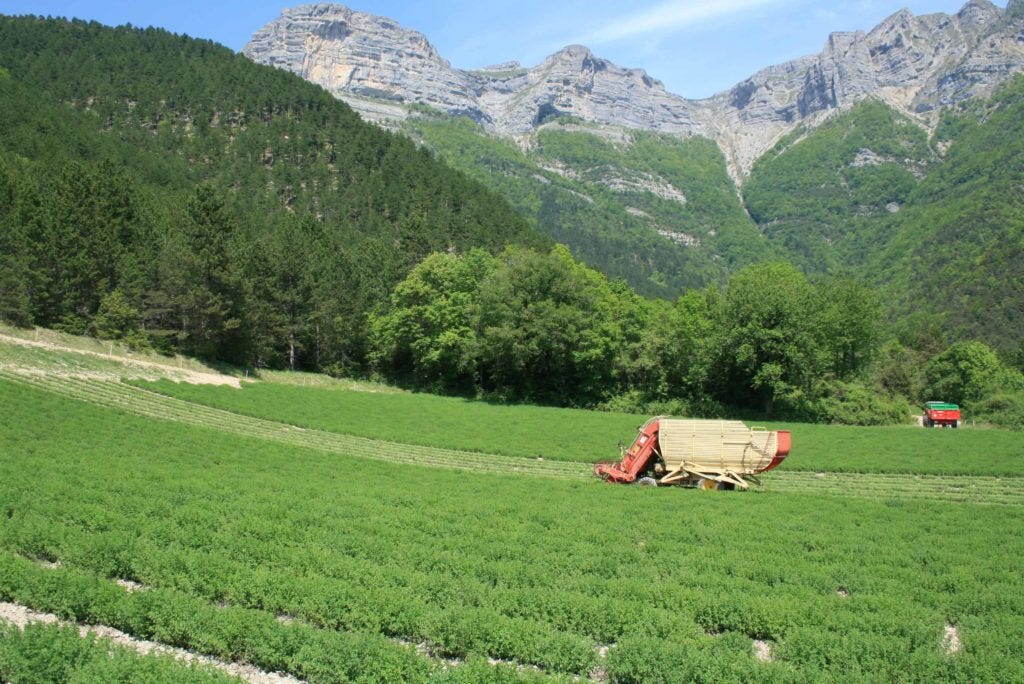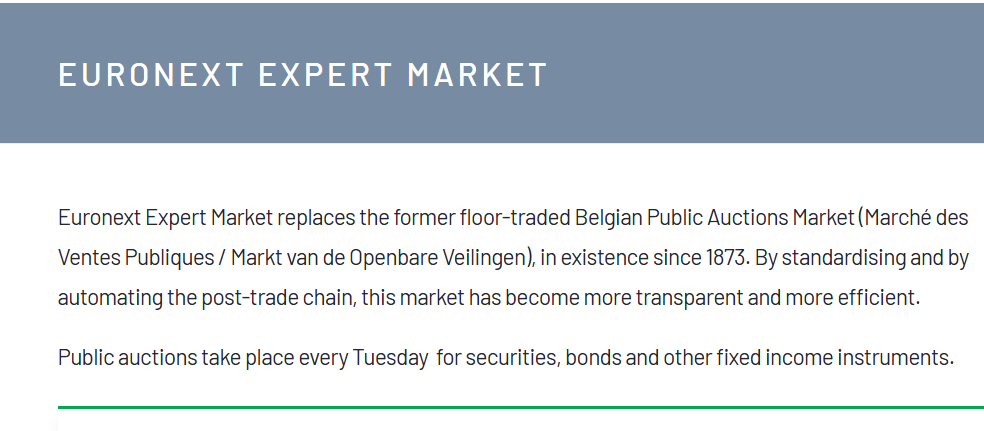One time at the Farmer's Market, I struck up a conversation with a mushroom forager. I asked him an obvious question I am sure he had been asked a million times before: "How do you know you aren't picking poisonous ones?" He told me that there were thousands of mushroom varieties and learning which ones were poisonous was a waste of time; instead, he said, "You focus on getting good at identifying the ones that definitely aren't." In fact, of the nearly 15,000 known species of mushrooms, only 2% are considered safe for human consumption, and only 25 are common in culinary applications.
In developing an investment strategy, you should be more like a mushroom forager. Most long-run successful investment track records are partially defined by identifying what you can safely ignore. Dave Waters has made his career by ignoring large swaths of the market. His firm, Alluvial Capital Management, has traditionally focused on thinly traded over-the-counter securities. Stocks that not only lack any sell-side coverage or large passive ownership, but also for which even active buyers and sellers are scarce.
There's no magic to this strategy. It requires just as much, arguably more, analytical rigor than the largest, most liquid names. By not chasing the hot dots of growth and attention in public markets, Waters is able to develop pattern recognition in a smaller universe of investment options. The analysis requires less fidelity to an unpredictable future and more awareness of current dislocations from a known present.
Several months ago, I was excited to see a deck land in my inbox for a new strategy Waters was launching, focusing on "extraordinary physical assets." I have limited my own investing universe to companies with asset-heavy balance sheets, believing that asset values and the income they derive provide a larger margin of safety than purely operating businesses.
In an investment landscape dominated by tech giants and asset-light business models, Waters' new Tactile Fund represents a return to tangible value. The strategy focuses on companies with “extraordinary physical assets.” This is a deliberate counterpunch to the prevailing market wisdom that favors intellectual property and digital platforms over real asset-driven operations.
This approach seems particularly well-timed as tech giants like Amazon and Microsoft announce massive capital expenditure plans. As Waters observes, these companies are "essentially telling us that to do…to continue growing their earnings at double-digit paces, they're going to need a lot more physical assets than they used to." In his estimation, the asset-light trend is "looking a little long in the tooth."
What's particularly fascinating about Waters' approach is that it requires fundamentally reconsidering how most of the market values companies. Standard accounting practices often understate the true worth of physical assets, especially in inflationary environments. While GAAP accounting rules dictate that companies depreciate physical assets over time, the replacement costs of those assets may actually be appreciating, creating hidden value that patient investors can capture.
What Makes a Physical Asset "Extraordinary"?
Waters' investment thesis hinges on a specific definition of what makes a physical asset truly extraordinary. His framework divides these assets into three categories that together form a balanced approach to physical asset investing:
The first and most fundamental are assets related to food, water, and shelter—the base of Maslow's hierarchy applied to investing. These assets tend to be naturally defensive, maintaining their relevance and value regardless of economic conditions.
The second category encompasses industry and infrastructure—the skeletal system of a functioning economy. These include ports, toll roads, warehouses, and terminals facilitating essential economic activity. While perhaps less glamorous than high-growth tech stocks, these assets provide steady, reliable cash flows that often trade like interest rate proxies.
The third category, luxury, is perhaps the most intriguing and frequently misunderstood. Waters emphasizes that he's not talking about luxury brands, which depend on changeable consumer preferences and mindshare. Instead, he focuses on physical places and components that have maintained their appeal for generations due to inherent qualities that cannot be replicated.
"When I talk about luxury in this category, I'm talking about more places and things…Real estate in the Swiss Alps or the French Riviera or places people have gone for hundreds of years because of the climate or the topography that won't change and can't change and has barriers to entry."
French company Robertet (RBT on Euronext) that controls exclusive access to fields of jasmine for perfumery components perfectly illustrates the concept. The company is built on assets acquired centuries ago that would be virtually impossible to replicate today, creating an enduring competitive advantage.
Foraging in a Global Haystack
The challenge in implementing this strategy lies in finding these extraordinary assets, which are often hidden on balance sheets and cannot be easily identified through standard screening methods. Waters acknowledges it took him 11 years of professional money management to build a sufficient list of compelling opportunities.
"No, it's not like you can set up a screen in Bloomberg or whatever you're using to say find me companies with great physical assets…It's a lot of painstaking work."
This difficulty creates an opportunity for investors willing to do the detective work. Many of these companies fly under the radar of institutional investors due to their size, structure, or liquidity constraints. They're often family-controlled businesses or have large core shareholders, making them uninvestable for large pools of capital.
Waters specifically targets companies with market capitalizations of $500 million to $1 billion—too small for giants like Blackstone, which would rather deploy $100 billion into infrastructure than $1 billion. This focus on smaller, overlooked companies helps insulate the strategy from competition with large capital flows that could compress future returns.
A key aspect of Waters' approach is its global scope. While U.S. investors have enjoyed exceptional returns over the past decade, many international markets offer attractive assets at more reasonable valuations. Waters argues that investor perceptions haven't caught up with improvements in governance and transparency in many international markets.
"I think investor perceptions are lagging reality," he observes.
"Certain economies have made great strides in updating their legal systems, updating their systems of investor protection, updating their standards for transparency and management responsibility."
This global perspective leads to fascinating discoveries, from Swiss Alpine Railways to an auction market in Belgium that "trades every Tuesday morning" and hosts some "reasonably good companies."
Backing the Right People
Management quality becomes particularly crucial for companies with extraordinary physical assets. Since many are family-controlled or have concentrated ownership, investors must assess whether controlling interests will act in ways that benefit all shareholders.
"One of my kind of fundamental beliefs is management doesn't tend to change its stripes…If they have a history regarding shareholders and treating minority partners well, they continue to do that. If they don't, they basically don't."
The exception can be generational transitions, where new leadership might bring different priorities and a greater focus on shareholder returns. These transitions can create particularly attractive entry points for investors who recognize the potential for improved capital allocation or operational efficiency.
Building a Balanced Portfolio of Extraordinary Assets
Waters approaches portfolio construction by allocating roughly one-third to each of his three categories. This creates balanced exposure where different parts of the portfolio shine in different economic environments:
"Maybe you're never in an environment where everything is working at the same time, but you're also never really ever in an environment where nothing is working,"
This balanced approach creates a portfolio that, while "never likely to be the fastest car on the road," should deliver reliable performance across a range of market conditions—"a minivan strategy" as Waters puts it, referencing a car that won't win speed contests but will get you to your destination comfortably in most situations.
Durable Means Duration
Perhaps the most critical aspect of investing in real asset-driven companies is the time horizon. These investments rarely offer immediate catalysts or quick wins. Instead, they reward patient investors who can hold for the long term, allowing asset values to appreciate and management to compound returns through disciplined capital allocation.
That's why Waters created a separate strategy for these companies rather than including them in his main portfolio.
"I can't really identify a catalyst, so maybe they're not appropriate for my main strategy…but I have every confidence that if I own this for 20 years, it'll come out, it'll work out well for me."
For investors who have grown weary of chasing the next big thing in technology or trying to predict disruptive innovations. Waters' approach is an investment strategy grounded in physical reality rather than digital potential, focused on assets that have maintained their importance and scarcity for generations and likely will for generations to come.
















